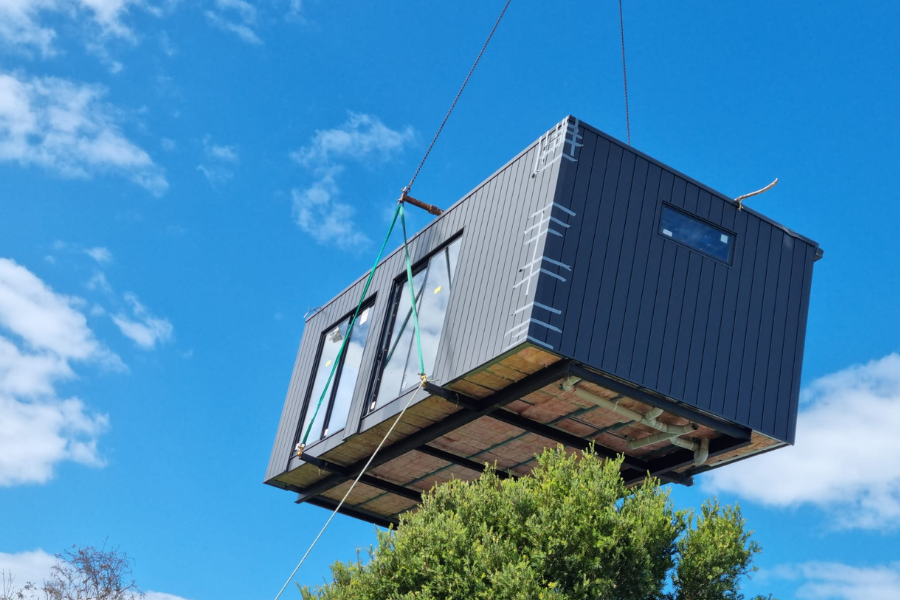Apr 22, 2025
How a Simple Fix Made Our Historic Home Warmer and Quieter
An innovative energy-efficient solution for drafty windows
By: Diane Chojnowski

Living in a historic home comes with its fair share of charm—and challenges. Our Gothic house, built in 1860, boasts beautiful, tall, architecturally distinctive windows contributing to its character. However, despite having been replaced with double-pane glass by previous owners, these windows were drafty and made our home uncomfortably cold in the frigid Midwestern winters.
A Chilly Problem with an Innovative Solution
One of the coldest rooms in our house was the dining room. No matter how high we set the thermostat, drafts would creep in, making for an uncomfortable dining experience in the winter and contributing to higher heating bills. We explored various insulation solutions and had a handyman caulk and weatherproof the windows and doors, hoping that would solve the problem. It helped, but didn’t eliminate the drafts. We used window insulation shrink kits and got some comfort in the winter, but we weren’t happy with how they looked and wanted a permanent solution.
We were reluctant to replace the windows, as they are essential to the home’s architectural character, and the cost of replacing such tall windows was prohibitive. Historic windows often feature unique sizes and shapes that aren’t commonly available today. Replacing them either means building custom windows or altering the opening’s dimensions. Modifying the size or shape of the opening reduces the likelihood that standard replacement windows will fit properly. The gaps around the new windows may be just as drafty—if not worse—than the windows they are replacing.
While exterior storm windows were an option, custom making them can be expensive, and we were concerned about how they would affect the appearance of our beautiful arched windows. So, we continued looking for an affordable solution. Searching online, we learned about Indow window inserts from a home performance forum.

These interior window inserts are made of thermal acrylic glazing and edged with a patented compression tube to fit inside the original windows. They are custom-made to fit any size or shape of window—even arches—and come edged with white, brown, or black, to blend into the existing frame. The tubing compresses for a tight fit, holding the insert securely in place while sealing out drafts. Research shows an average of 20% energy savings on heating and cooling bills compared to 15–30% for replacement windows.
We decided to try them because it seemed like an affordable solution to our drafty windows problem. The window inserts fit snugly into the window well, creating a protective layer of insulation without requiring any permanent modifications. We installed them in our dining room first, and the results were immediate and remarkable. The drafts disappeared, and the once-coldest room in our house became the warmest and coziest.

Encouraged by the success in the dining room and dreading the return of the freezing polar vortex, this year we decided to purchase six more Indow window inserts for our office and den. Again, the transformation was significant—no more drafts, a noticeable increase in warmth, and an overall improvement in comfort. The installation was easy. I did it myself!
Beyond warmth, we’ve noticed a significant reduction in outside noise. The inserts provide a level of sound insulation that we hadn’t anticipated, making our home noticeably quieter and more peaceful. Additionally, our heating system doesn’t have to work as hard, leading to increased efficiency. And we qualified for a 30% 25C tax credit—which was a great incentive!
The most rewarding aspect is that all of these benefits came without compromising the beauty of our windows. Unlike other leaky window solutions, which might require alterations or replacements, Indow inserts blend seamlessly into the existing structure, preserving the original charm of our home.

A Conversation with the Founder of Indow
Curious to learn more about the innovation behind Indow window inserts, I reached out to Sam Pardue, the founder of Indow. His journey into inventing the inserts was both unexpected and inspiring.
Pardue didn’t start out as an engineer or contractor—he was an MBA with a creative mind who had no idea he would one day become an inventor. His journey began about 15 years ago when he was living in a 1906 Portland Craftsman home with beautiful original windows. He loved their character but was frustrated by the energy loss. Traditional exterior storm windows weren’t appealing, so he began experimenting with alternative solutions.
His first attempt involved a magnetic system, but it had significant design flaws. A turning point came when his friend Mark Pratt, who was working on a construction project in Pardue’s backyard, took an interest in his invention. Pratt saw the potential in Pardue’s idea and offered to help improve it. Inspired by refrigerator door seals, they explored the possibility of replacing the magnetic component with a flexible, spring-like system that could fit snugly into window frames. Pardue sketched out the concept and sent it to Pratt, who took it upon himself to create a working prototype.
Weeks later, Pratt arrived at Pardue’s house with a surprise—a fully functional prototype featuring a window display stand with an insert that fit perfectly inside. Pardue was thrilled. The design was remarkably simple yet effective. However, they quickly realized another challenge—most window frames are not perfectly square. In fact, 95% of all window frames have significant variations. To make the window inserts truly work, they needed a precise measuring system that could account for these irregularities.
Developing this system proved to be more complex than the mechanical design itself. They needed a software solution that could allow homeowners and contractors to measure windows accurately and detect any mistakes in real time. After extensive development, they created a process that ensures 99.8% of Indow inserts fit correctly on the first try, even when homeowners take the measurements themselves.
Beyond Residential Homes
While Indow inserts have insulated our windows and improved our comfort, I learned from Pardue that their impact extends far beyond residential spaces. Indow has also developed IndowPRO, a product designed to provide the most efficient and reliable way to get high performance glazing installed inside existing commercial buildings. Unlike the lightweight residential inserts, IndowPRO incorporates high-performance glazing, including R-18 vacuum-insulated glass, to deliver world-class energy efficiency. This system has already been implemented in large-scale projects, such as a 452-room hotel in Atlanta, where it significantly improved insulation, reduced heating and cooling costs, and enhanced soundproofing—all without altering the original window frames.
Indow has been recognized for innovation and is a semi-finalist in the DOE Building Envelope Innovation Prize—Secondary Glazing Systems. This $2.1 million prize encourages the production of high-performance, cost-effective secondary glazing systems to improve the efficiency of commercial windows.
The Power of Ingenuity
As energy efficiency becomes an increasing priority, innovative solutions continue to emerge, offering smarter ways to reduce energy consumption and enhance comfort. Creative solutions like Indow demonstrate the power of ingenuity in tackling energy efficiency challenges. By embracing forward-thinking design, we can make meaningful progress toward a more sustainable and energy-efficient future.
This is the first in a series of stories highlighting innovation in home energy efficiency. Have you discovered or developed an energy-saving solution you’d like to share? I’d love to hear from you. Reach out to me at dchojnowski@building-performance.org.
Resources
Center for Energy and Environment: Interior storm windows as a cost-effective window weatherization option
National Park Service: Weatherization of Historic Buildings: Repair and Upgrade Windows and Doors
National Trust for Historic Preservation: 10 Things You Should Know About Retrofitting Historic Windows
U.S. Department of Energy: Energy-Efficient Window Solutions
U.S. Department of Energy: Interior Storm Windows and Panels
U.S. Department of Energy: Storm Windows





